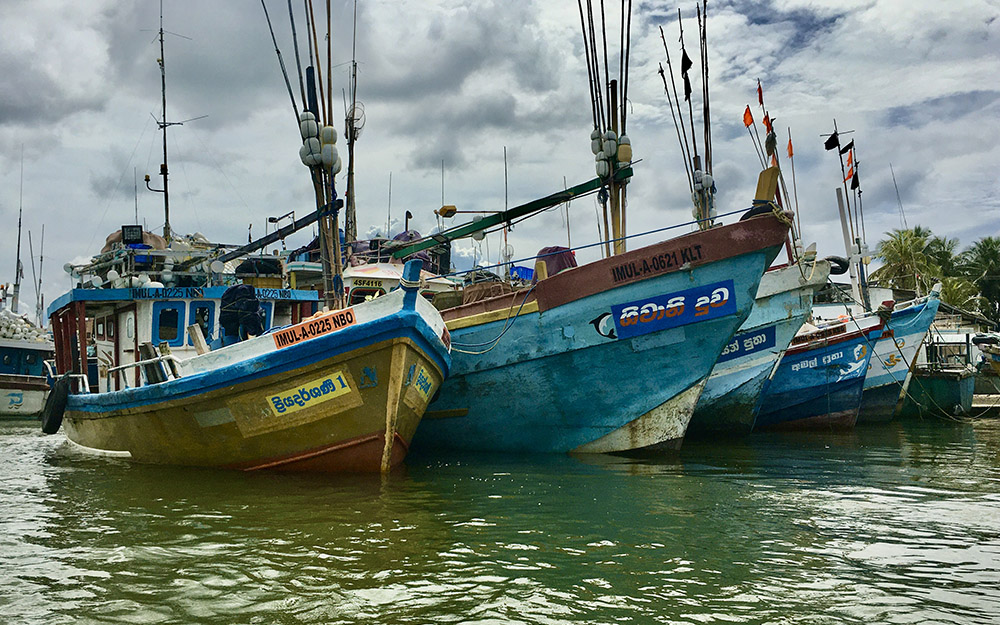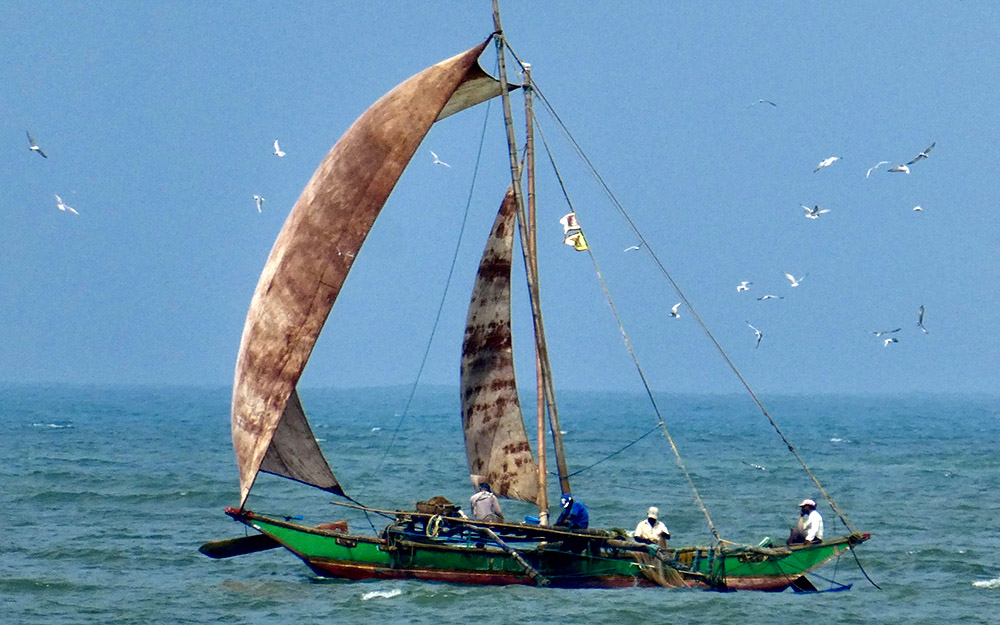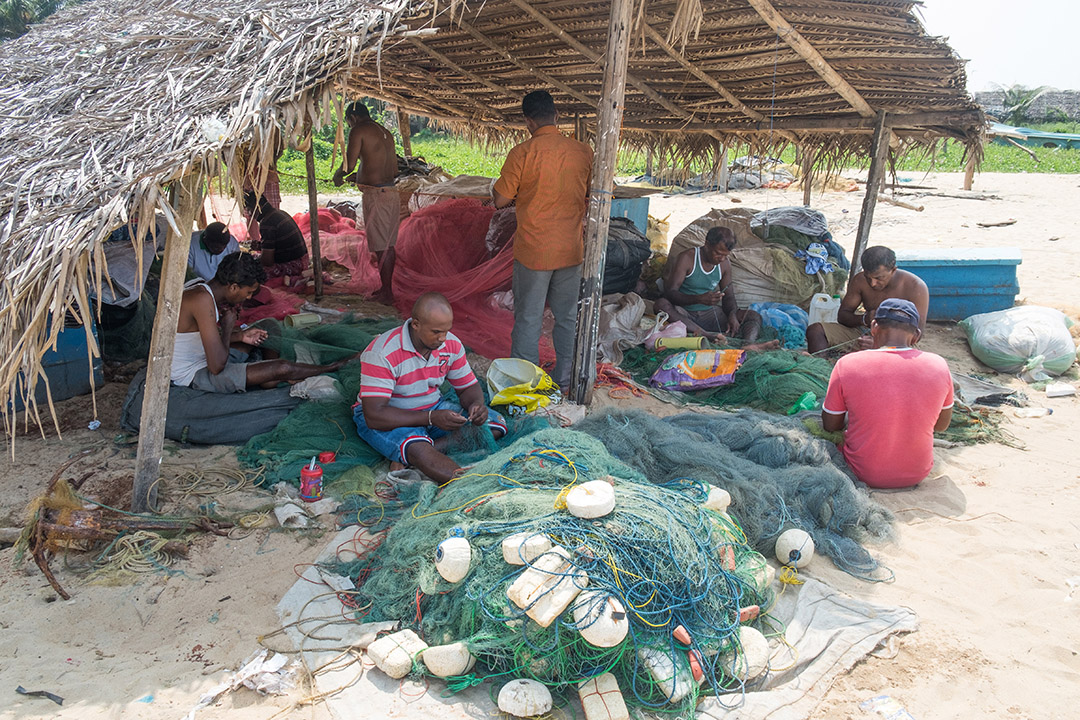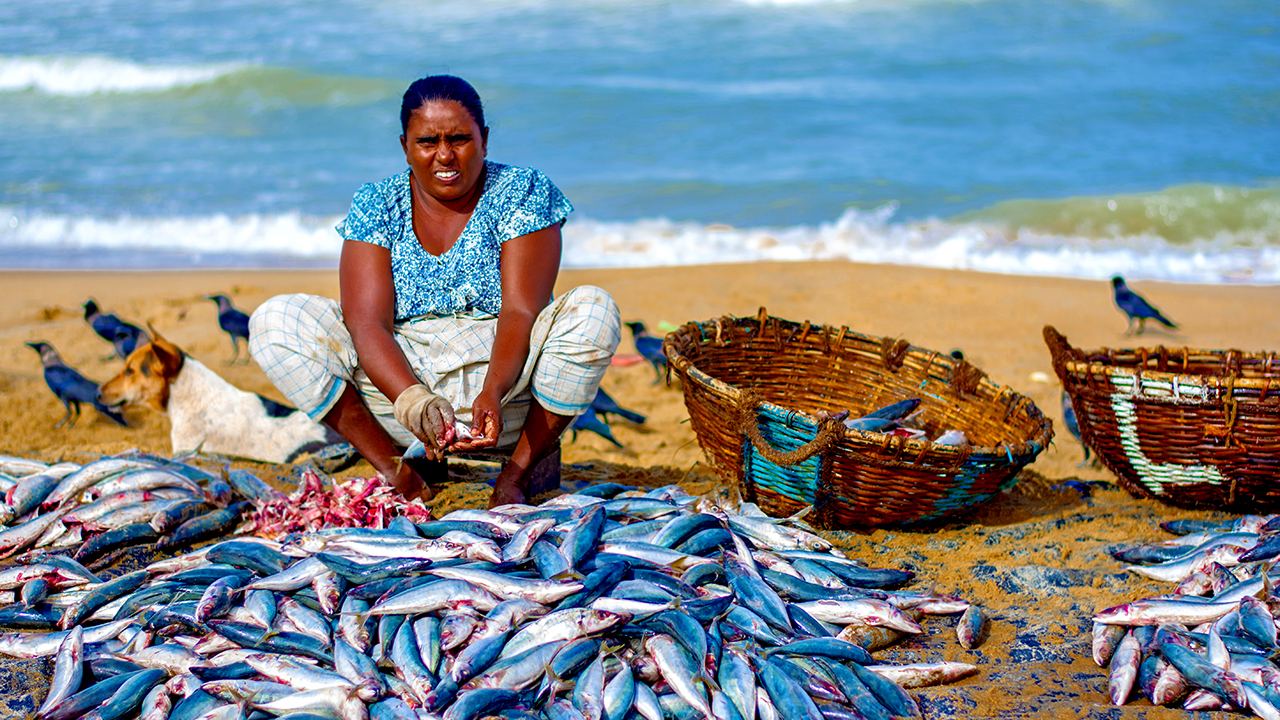Fishing plays a key role in the economic and social life of Negombo
Fishing plays key roles in Negombo’s economic and social lives by providing more local employment than any other industry.
Apart from the fishermen themselves, many owe their livelihoods to fish-related industries such as boat building, net manufacture, ice production, processing, trading, marketing and transport.
Inshore fishermen also use their small boats for recreational fishing and sightseeing trips on Negombo Lagoon and the Hamilton Canal.
A high proportion of the fish caught is consumed locally in homes, restaurants and hotels, as well as being distributed round the island.
Global exports
Much of the high-value fish and seafood, such as tuna, lobster, crabs and prawns, is exported around the world, especially the UK and Europe.
Fish is a favourite of Negombo’s rich mix of cultures and religions, and therefore always in great demand as a vital source of animal protein.
There is a wide range of craft used depending on the type of fishing.
These include the picturesque traditional outrigger catamarans that fish for prawns just offshore, a familiar sight from the beach with their brown sails and crews of three or four.
Catamarans
There are also small one-man catamarans powered by outboard motors that fish inshore for small prawns, many of which are sold for bait.
Next up are the 25ft motorised boats again made from fibreglass reinforced plastic, some of which launch from the beach and drop long nets that are hauled to land their catches on the foreshore.
Crowd of tourists as well as locals watch in anticipation of a good catch. Other boats in this class head out to sea from the harbour to either net or line fish.
Finally there is the fleet of 60ft multi-day boats with crew quarters that travel long distances to catch deep-sea fish.
These boats can remain at sea for anything up to a month at time. Even bigger boats can be away for three months sat a time.




